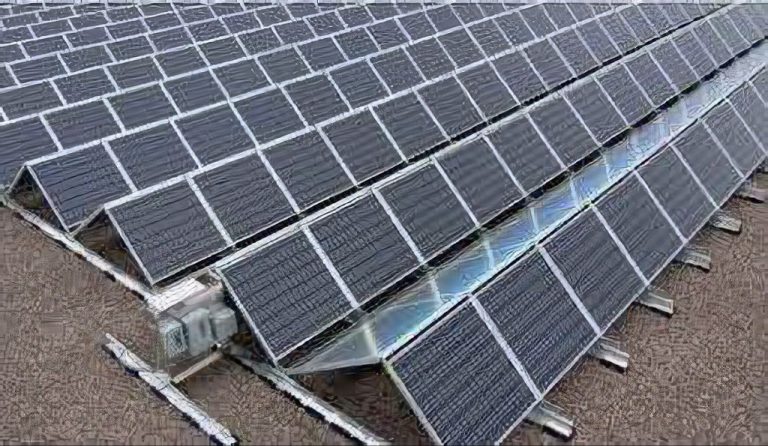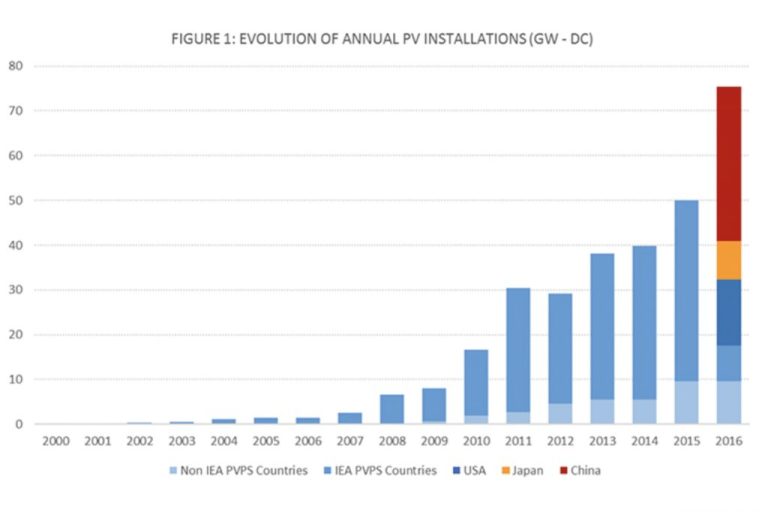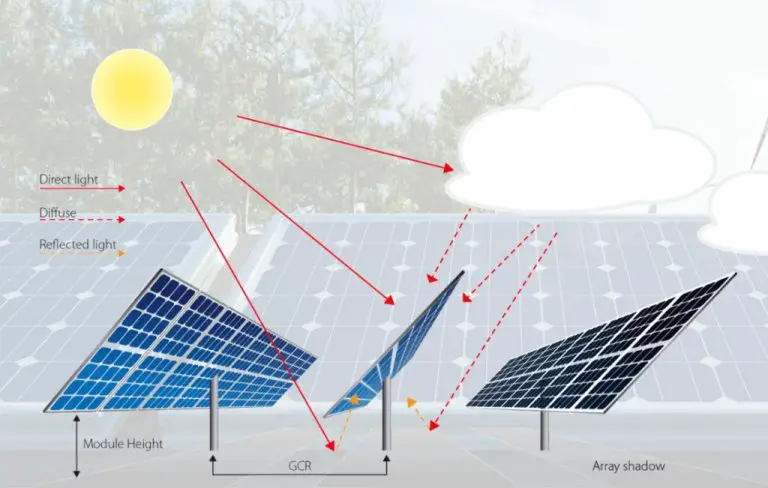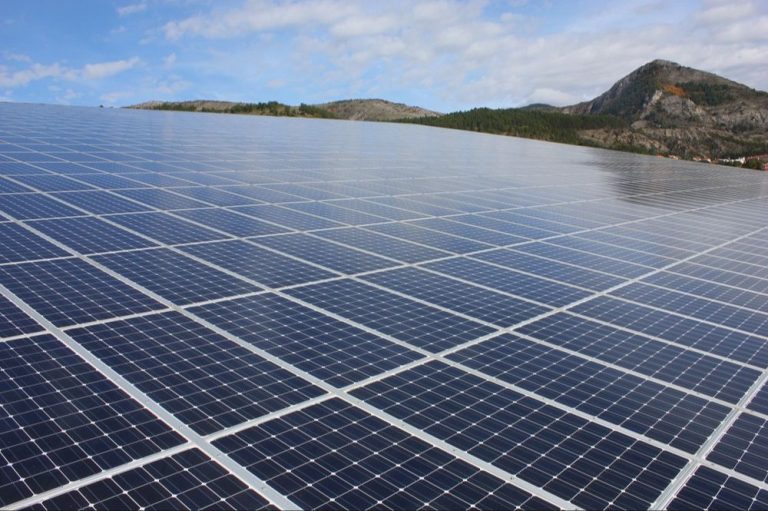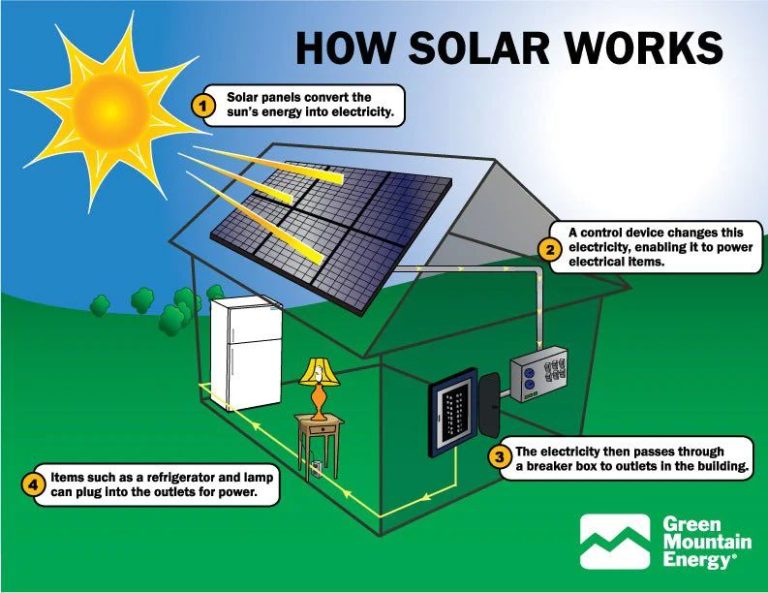What Is Sunlight Energy Converted To In Photosynthesis?
Photosynthesis is the process by which plants, algae and some bacteria convert sunlight into chemical energy that can later be released to fuel the organism’s metabolic activities. This chemical energy is stored in the form of carbohydrates such as sugars, which are synthesized from carbon dioxide and water. Photosynthesis provides the energy source for virtually all life on Earth, and is thus one of the most important biochemical processes known.
In plants, photosynthesis typically takes place in the leaves, which are specially adapted to trap sunlight and allow for gas exchange. The energy from sunlight is absorbed by chloroplasts inside the leaf cells. The chloroplasts contain green chlorophyll pigments which are able to trap specific wavelengths of light.
During the process of photosynthesis, carbon dioxide from the air passes through small pores in the leaves called stomata. Water is absorbed by the plant roots, then travels up through the plant’s vascular system and into the leaves. The carbon dioxide and water combine with sunlight energy to produce glucose sugar and oxygen. The glucose provides food for the plant, while the oxygen is released into the atmosphere through the stomata.
Sunlight Energy
Sunlight contains different wavelengths of electromagnetic radiation spanning the ultraviolet, visible, and infrared ranges. The visible light used for photosynthesis ranges from 400-700 nanometers (nm) in wavelength. This visible light contains photons, which are discrete packets of energy. The energy in these photons is absorbed by specialized pigment molecules known as chlorophyll that reside in plant cells. Chlorophyll is located in organelles called chloroplasts and gives leaves their green color. When a photon is absorbed by a chlorophyll molecule, its energy is transferred to an electron in the chlorophyll, causing the electron to become excited to a higher energy state.
Absorption of Light Energy
Photosynthesis occurs in chloroplasts, specialized organelles found in plant cells and algae. Chlorophyll, the green pigment found in chloroplasts, absorbs sunlight and uses its energy to drive the light-dependent reactions of photosynthesis. Specifically, chlorophyll absorbs photons in the red and blue wavelengths while reflecting green wavelengths, giving leaves their characteristic green color.
When a photon is absorbed by a chlorophyll molecule, it excites an electron to a higher energy state. The excited electron is then captured by a protein complex called a reaction center. There are two types of reaction centers: photosystem I and photosystem II. The energy captured by these reaction centers is used to drive the light reactions, which generate energy carriers such as ATP and NADPH that are used in the next stage of photosynthesis, the Calvin cycle. Therefore, the absorption of light energy by chlorophyll is the first step that converts the energy of sunlight into chemical energy that can be used by plant cells.
Light Reactions
The light reactions occur in the thylakoid membranes within chloroplasts. This is where the magic of photosynthesis takes place by converting light energy into chemical energy.
Specifically, the light energy from the sun is absorbed by chlorophyll and other photosynthetic pigments in the thylakoid membranes. This energy is used to split water molecules, releasing oxygen as a byproduct of this reaction.
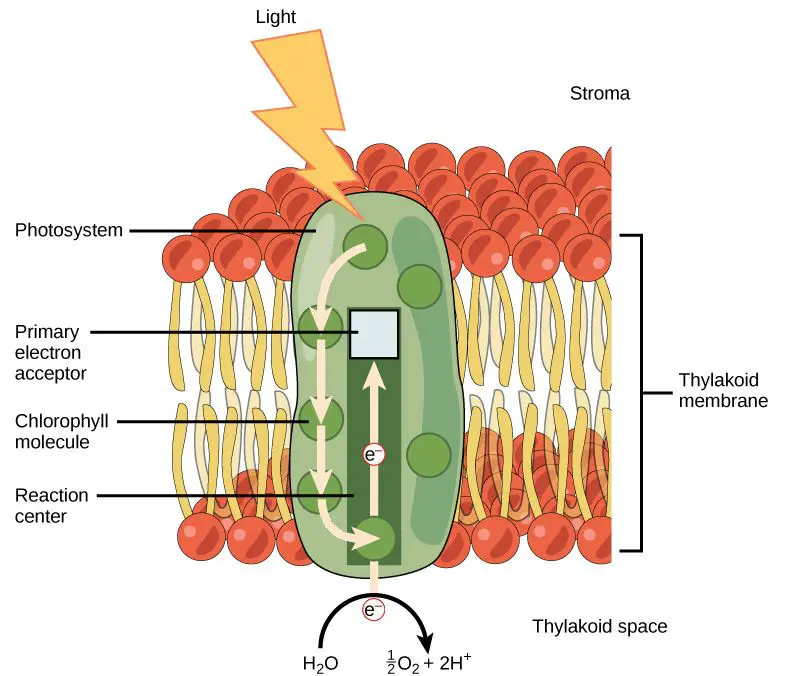
The energy derived from sunlight is then utilized to produce two extremely important molecules – ATP and NADPH. The creation of these energy carriers is fundamental to the light reactions. The ATP and NADPH will eventually be used to power the next stage of photosynthesis.
ATP and NADPH
Two particularly important products of the light reactions are ATP and NADPH. ATP, or adenosine triphosphate, is the main “energy currency” molecule of cells. It provides the fuel that powers most cellular reactions. NADPH, or nicotinamide adenine dinucleotide phosphate, carries energized electrons that will be used in the next stage of photosynthesis.
Light energy is initially converted into chemical energy in the form of ATP and NADPH during the light reactions. The light energy splits water molecules, generating protons and oxygen as byproducts. As the protons flow downhill across thylakoid membranes, they power molecular machinery that creates ATP. The energized electrons from the split water molecules are captured by NADP+ to produce NADPH.
Therefore, the light reactions harness light energy to produce ATP for chemical power and NADPH for reducing power. These energized carriers will then provide the fuel and electrons needed to fix carbon dioxide into sugar molecules in the next stage of photosynthesis, known as the Calvin cycle.
Calvin Cycle
The Calvin cycle, also known as the dark reactions, is the second stage of photosynthesis. It occurs in the stroma of the chloroplast and utilizes the energy stored in ATP and NADPH generated during the light reactions. The Calvin cycle serves to fix carbon from carbon dioxide in the atmosphere into organic compounds like glucose.
In this cycle, CO2 enters the chloroplast and attaches to a 5-carbon sugar called RuBP (ribulose bisphosphate). This initial attachment of CO2 forms a 6-carbon intermediate which is then reduced using electrons provided by NADPH, releasing the first 3-carbon glyceraldehyde-3-phosphate (G3P) molecule. For the net synthesis of one G3P molecule, the cycle must take place three times, fixing three CO2 molecules, and using 9 ATP molecules and 6 NADPH molecules.
The G3P produced can be used to form more complex carbohydrates like glucose and fructose. In this way, the Calvin cycle utilizes the energy harnessed from sunlight during the light reactions to fix inorganic CO2 into energy-rich organic compounds that can be used by the plant. This final stage of carbon fixation is the culmination of photosynthesis.
Glucose Production
Glucose is the simple sugar created through photosynthesis and serves as the key source of energy for plants. During the Calvin cycle, CO2 is fixed with RuBP to create 3-phosphoglycerate (3-PGA). 3-PGA is further reduced and rearranged to create the 6-carbon sugar, glucose. This glucose molecule can then have one of two fates:
It may be used immediately by plants for energy to fuel various cellular reactions and build more complex molecules like cellulose for structure. The glucose gets metabolized through cellular respiration to synthesize ATP. This ATP powers energy-requiring processes in the plant cell.
Alternatively, the glucose may be transported away from the chloroplast and converted into starch for storage. Starch serves as the way plants stockpile excess glucose. It gets deposited as granules that can be broken down later to retrieve the glucose when needed. The glucose can also be integrated into structural carbohydrates like cellulose that form plant cell walls and fibers.
Use of Glucose
The glucose produced during photosynthesis provides plants with the energy they need to grow and function. Glucose molecules contain energy stored in their chemical bonds that is released when the bonds are broken during cellular respiration. Plants use some of this glucose directly to power metabolic processes, produce compounds like amino acids and lipids, and assemble molecules like proteins.
Plants also store excess glucose for later use in the form of insoluble starch and structural cellulose fibers. Starch serves as an energy reserve, similar to how animals store fat. When glucose is needed, starch can be broken down back into glucose molecules. Cellulose is used to build strong cell walls and woody stems. As plants grow, they construct new cell walls from cellulose. The cellulose provides structure and protection, while also acting as an energy reserve that can be accessed if needed.
The glucose produced by plants doesn’t just provide energy for the plants themselves. Animals and other heterotrophs obtain glucose when they consume plants or other organisms that eat plants. For most heterotrophs, the glucose from plants is the primary source of energy and carbon in their diets. Photosynthesis is vital for life on Earth because it harnesses the sun’s energy to produce glucose that powers both plants and animals.
Importance of Photosynthesis
Photosynthesis is critically important for life on Earth. It provides the source of energy that drives virtually all ecosystems.
The glucose that is produced by photosynthesis is used by plants and animals for energy. Photosynthesis is the only process that provides the food source for all organisms. Without photosynthesis, there would not be enough food to sustain life on the planet.
Photosynthesis also generates oxygen as a byproduct. The oxygen released by plants during photosynthesis is what most living organisms depend on for respiration. Photosynthesis is solely responsible for replenishing atmospheric oxygen levels, making it vital for aerobic life.
Photosynthesis forms the foundation of most food chains and webs. Organisms higher up in the chain, including humans, rely on the food energy produced initially from photosynthesis. The cycle of energy begins with photosynthetic organisms like plants and algae.
In summary, photosynthesis powers life on Earth by producing food energy, releasing oxygen, and supporting the ecosystem food chains. It is one of the most significant biochemical processes occurring on the planet.
Conclusion
In summary, the light energy from sunlight is converted into chemical energy in the form of glucose during the process of photosynthesis. This conversion occurs through a complex series of reactions that take place in plant cells. Sunlight is absorbed by chlorophyll and other pigments, providing the energy needed to drive the light-dependent reactions. In these reactions, ATP and NADPH are produced, which fuel the light-independent reactions of the Calvin cycle. The end result is that carbon dioxide and water are converted into glucose, with oxygen being released as a byproduct.
The ability of plants, algae, and some bacteria to perform photosynthesis is critical for almost all life on Earth. Photosynthesis provides the energy that powers ecosystems, as well as producing oxygen that aerobic organisms depend on. By capturing sunlight and converting it into usable energy, photosynthetic organisms provide the foundation for the vast majority of food chains and are an essential part of the planet’s energy budget.
In summary, sunlight energy is the original source that allows photosynthetic organisms to create glucose and sustain life on Earth. This fundamental process supports the great diversity and abundance of species across terrestrial and aquatic ecosystems.

